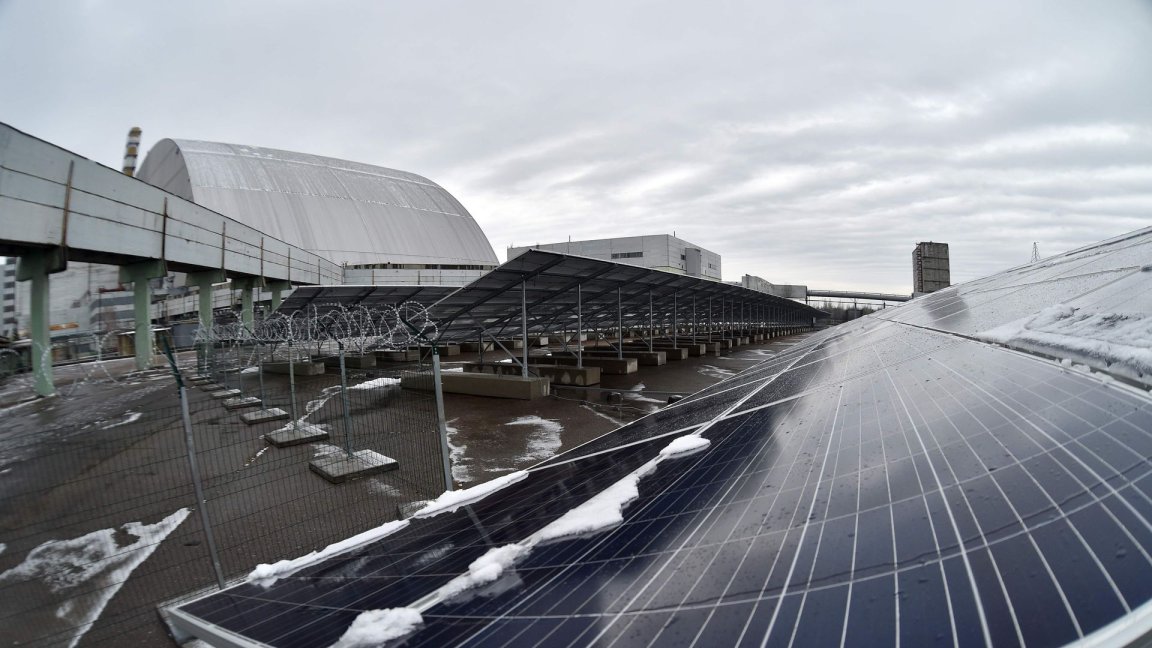
Solar Chernobyl
When the words “energy” and “Chernobyl” appear together in a sentence, the topic is typically the 1986 nuclear energy disaster that left the Ukrainian city in shambles. Today, the abandoned site of the world’s worst nuclear disaster is no longer just a radioactive pile of rubble. It’s the future home of Ukraine’s first solar plant.
Roughly 100 meters (328 feet) away from the immense metal dome Ukraine placed over the Chernobyl nuclear power plant’s failed reactor in 2016, workers have installed about 3,800 solar panels to support a one-megawatt solar power plant. Because the soil is still heavily contaminated in the area, the solar panels are attached to a concrete base.
Solar Chernobyl, the Ukrainian-German company that is leading these efforts, claims the project will be on stream in the next few weeks. Initially, the plant will be able to cover the needs of a medium-sized village (about 2,000 apartments), Solar Chernobyl’s head Yevgen Varyagin, told AFP. Eventually, the company hopes the plant will produce 100 times its current capabilities.
The company spent an estimated one million euros ($1.54 million) on the solar installation, and based on current projections, it may be able to pay for itself in as few as seven years.
Reviving a City
According to some estimates, the nuclear fallout from the Chernobyl disaster contaminated up to 75 percent of Europe. According to Ukrainian authorities, an area larger than 2,000 square kilometers (772 square miles) near the site of the disaster is so contaminated that people won’t be able to safely live there for 24,000 years.
While a dome couldn’t possibly cover all the contaminated land, the 2016 placement of one over the reactor, which contains highly radioactive magma, has reduced radiation near the plant drastically. According to official data, it’s now at one-tenth of prior levels.

While the land still can’t be used for agriculture, it is suitable for other projects, Ostap Semerak, Ukrainian Minister of the Environment, told AFP in 2016. The Solar Chernobyl plant is one such project, and others could follow.
Olena Kovalchuk, spokeswoman of the State Administration for the zone of Chernobyl, told AFP that Kiev has received roughly 60 proposals from foreign companies interested in participating in future solar developments in the area. The cheap price of land and closeness to power grids has made the Chernobyl site attractive for investors, Oleksandr Kharchenko, executive director of the Energy Industry Research Center, told AFP.
Though the site of the Chernobyl disaster may never again be the lively, populated town it once was, it can serve as a source of cost-effective renewable energy. While some are understandably hesitant about the project, if Solar Chernobyl can prove that it’s possible to safely install and maintain solar panels near the abandoned plant, a site previously synonymous with disaster could eventually come to represent the benefits of clean energy.